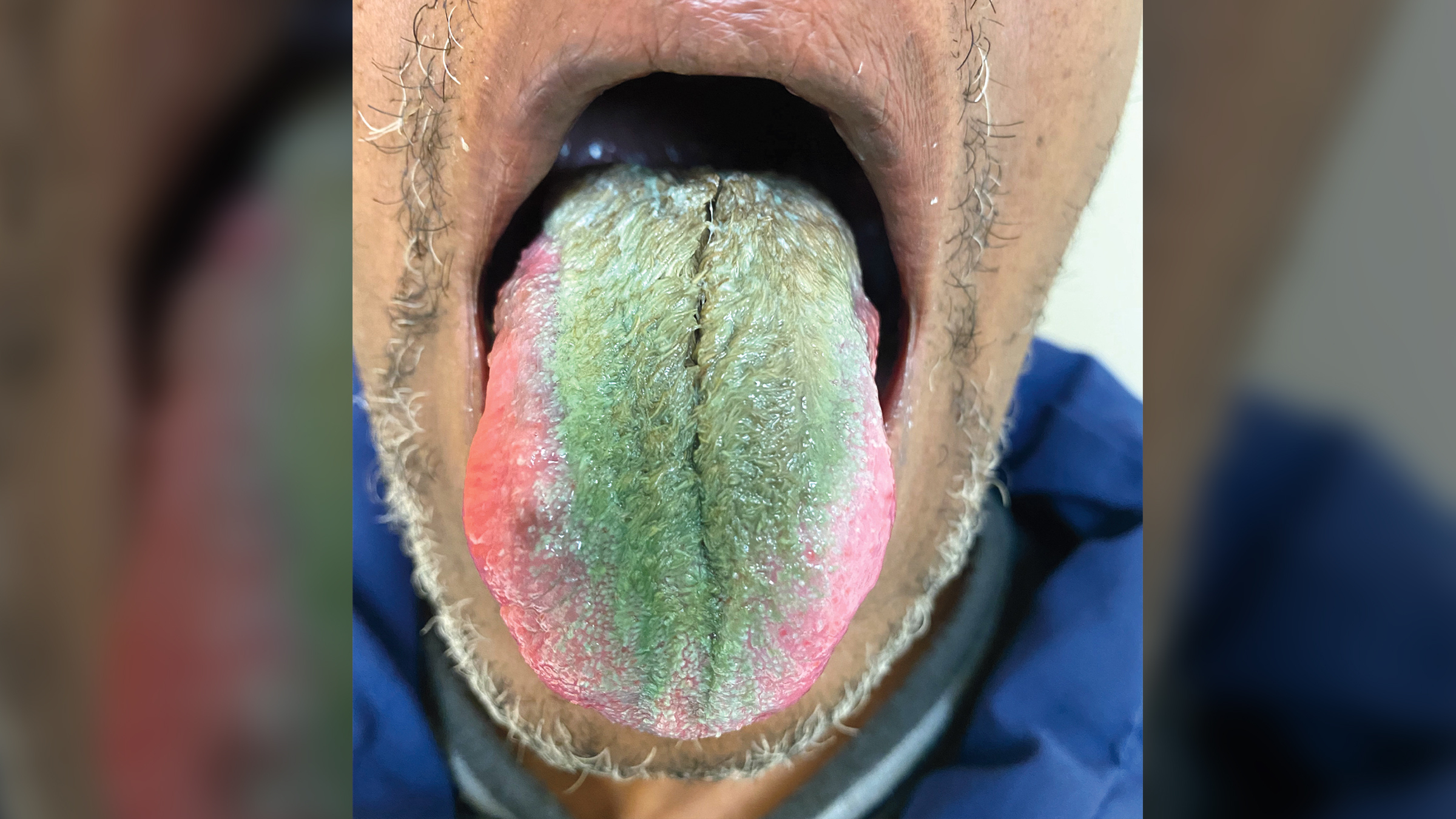
A 64-year-old man got a medical checkup after his tongue began sprouting green "hairs." The bizarre-looking fuzz turned out to be caused by a fairly common and harmless condition known as hairy tongue.
The patient's tongue had turned green about two weeks before he visited the clinic, shortly after he had completed a course of antibiotics for a gum infection. When the discoloration initially appeared, doctors suspected a case of oral thrush, a kind of fungal infection, and prescribed an antifungal treatment, but this did nothing to curtail the moss-like growths.
Upon closer inspection, physicians noticed that the man's filiform papillae — the tiny, cone-shaped bumps that cover the surface of the tongue and give it its rough texture — were longer than what would be expected on a healthy tongue. The doctors saw no other signs of injury or disease and the patient reported no pain or change in his sense of taste.
"A diagnosis of hairy tongue was made," physicians wrote in a case report published July 6 in the New England Journal of Medicine. Hairy tongue, or lingua villosa, is a benign condition that causes hair-like growths of various colors to sprout on the top of the tongue, they added.
Related: Boy's bright-yellow tongue was a sign of rare disorder
These growths are filiform papillae that haven't shed as they normally would when they come in contact with rough objects, such as a toothbrush, tongue scraper or solid, textured foods. Typically, the papillae grow to a fraction of an inch (1 millimeter) before they fall off "like a layer of skin being shed" in a process known as desquamation, according to the Cleveland Clinic.
When they are not regularly shorn off, the papillae can grow up to 0.7 inches (18 millimeters) long and lead to hairy tongue. The condition affects about 13% of people at some point in their lives, the majority of cases being in men and patients over 65, according to the American Academy of Oral Medicine.
As the bumps grow into hair-like fibers, they collect bits of food, bacteria, dead skin cells and other gunk that give the furry tongue its color. "Hairy tongue may appear brown, white, green, or pink, depending upon the specific cause and other factors, such as mouthwashes or even candy," the American Academy of Oral Medicine states.
And frequently, hairy tongue manifests as jet black fuzz, a condition specifically known as lingua villosa nigra, or black hairy tongue, according to the case report.
Risk factors for developing a hairy tongue of any color include eating a diet of soft foods and from drinking large amounts of coffee, tea or alcohol. Other risk factors include smoking, dehydration, poor oral hygiene and use of oral medication that can shift the population of microbes in the mouth, according to the case report. Brushing the tongue regularly is a good way of preventing the papillae from becoming elongated and discolored.
Physicians advised the green-tongued patient to gently scrub his tongue with a toothbrush four times daily and to stop smoking. "At 6-month follow-up, the tongue appearance had returned to normal despite the patient continuing to smoke," the doctors wrote in the case report.







